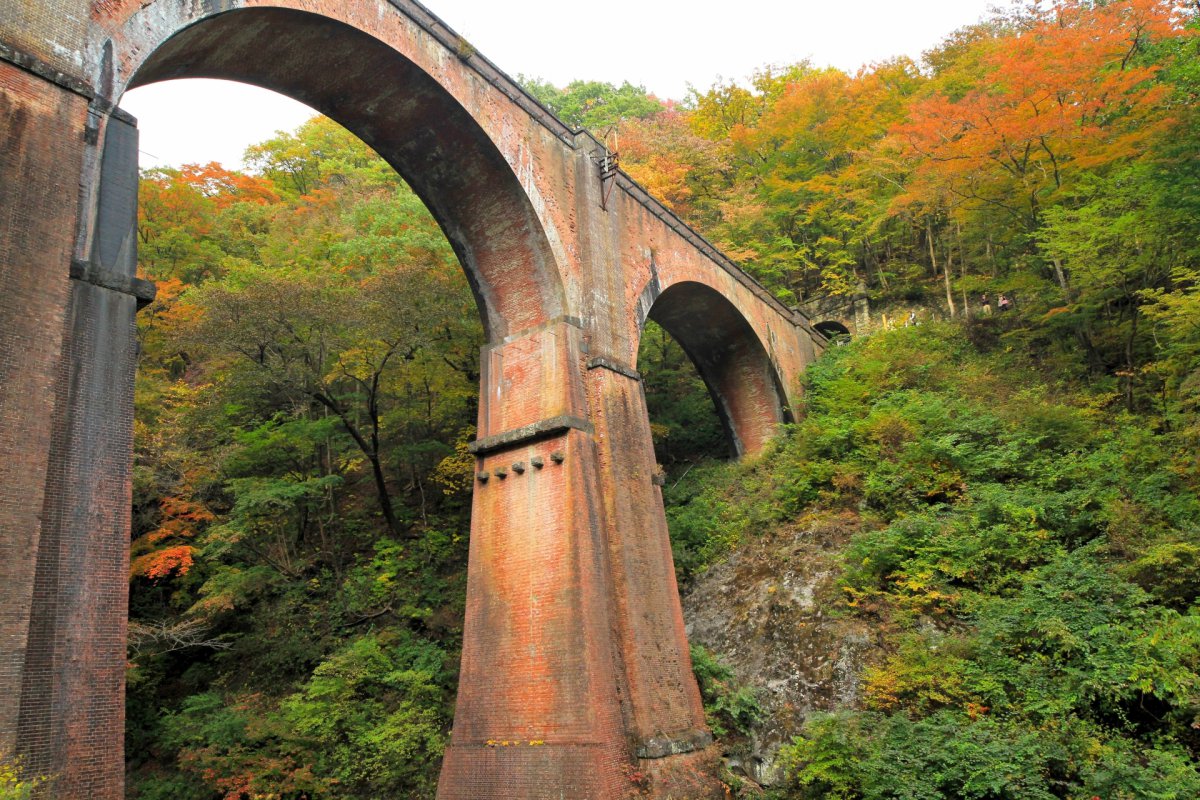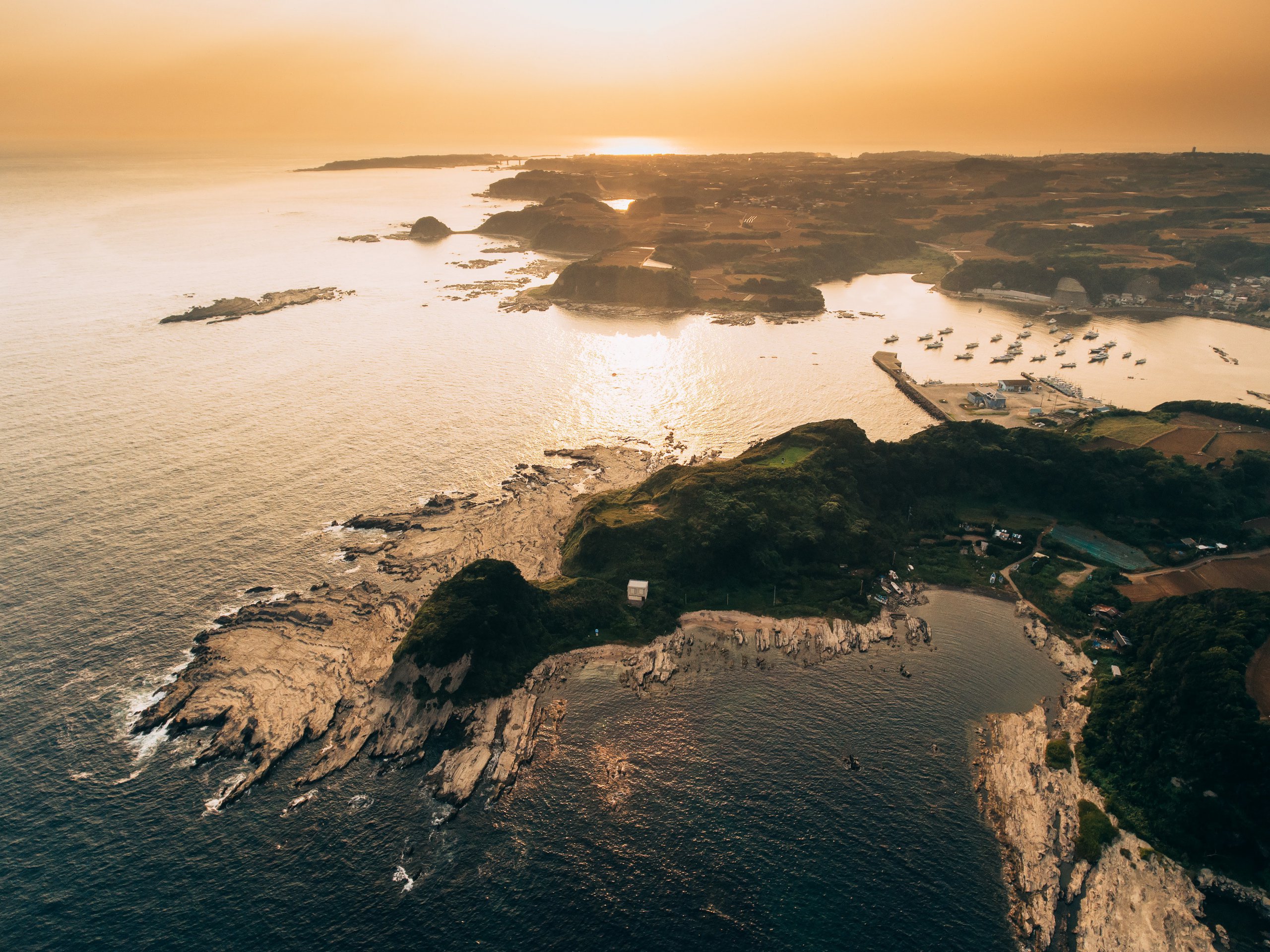Gunma is landlocked prefecture located in the heart of Japan, north of Tokyo in Kanto Region. The prefecture is surrounded by mountains and volcanos that ensure the high quality hot spring water Gunma prefecture is so famous for. But you don’t have to spend all your time bathing, as the nature in Gunma sets for great outdoor sports possibilities including hiking, bungee jumping and skiing and snowboarding in winter. A visit to Gunma is great for a weekend trip or even a day trip as you can reach the area in less than 1 hour from Tokyo by Shinkansen. Relaxing in one of the many hot spring resorts, after an active day outside, being surrounded by beautiful nature.. that sounds like a perfect way to escape from hustle and bustle of Tokyo, right? Here are our recommended places to visit in Gunma.
1. Kusatsu onsen town
Kusatsu is one of the most famous hot spring resorts in Japan, especially for its water’s health benefits which are said to cure any kind of illness, except for lovesickness. The hot water field known as yubatake is the symbol of Kusatsu. A total of 32,000 liters of hot water gushes out of the hot spring per minute, and yubatake in the centre of the town is the place where the piping hot water is cooled down. Especially during the night, yubatake is a popular photo spot with beautiful lightings. There are many souvenir shops, eateries, and ryokan (traditional inn) close to the yubatake so that people can enjoy exploring the area.

Right next to the yubatake in the Netsunoyu building where you can see a yumomi performance, which is the traditional method to cool down the piping hot Kusatsu spring water by stirring the water with large wooden paddles.
When you visit Kusatsu don’t forget to try the famous Kusatsu onsen tempura, especially those with maitake mushrooms, they are delicious!
▶Read more about things to do in Kusatsu Onsen
How to access Kusatsu
- From Ueno Station or Akabane Station in Tokyo, take JR Express Kusatsu and get off at Naganohara-Kusatsuguchi Station (about 2.5 hrs). Then take JR Bus Kanto to Kusatsu-Onsen (about 30 min).
- There are multiple direct JR highway buses from Tokyo such as Shinjuku, Shibuya and Tokyo Station (about 3.5 – 4 hrs).
2. Discover the origin of Daruma
Do you know the story about these traditional Japanese lucky charms? A Daruma is round shaped doll, formed after Bodhidharma, the founder of the Zen tradition of Buddhism. You use the Daruma as follows: when you purchase a Daruma, it will be missing its’ eyes. After making a wish or setting a goal and asking the gods for help, one of the eyes is painted on the doll. Once you have achieved the goal or the wish came true, you paint the second eye to thank the gods. The last step is to bring the Daruma to a temple or shrine, to be burned at a ritual.
When visiting Japan, you will spot the Daruma dolls everywhere, especially at the temples and shrines. They differ in size and some places have customised the Daruma, but the colour is generally red, the eyes are missing and there is only the head.

Gunma prefecture, Takasaki city to be precise, is responsible for the largest part of the production of Daruma dolls. Over 80% of all the Daruma dolls distributed in Japan are produced here. The technique of making Daruma dolls has been unchanged for 200 years and at Daimonya, a special Daruma doll atelier, you can learn all about the Daruma as all of its elements have a meaning. After the explanation you can also make your own Daruma doll, a great souvenir to take home!
Daruma painting workshop
Reservation required
9am – 5pm
¥ 800 (including your daruma and exercise)
How to access Daimonya
From Takasaki station take the JR Shin-Etsu train to Gumma-Yawata station. From there is it a 5-10 min walk.
3. Mount Shirane

Mount Shirane is a series of active volcano peaks just outside the Kusatsu onsen resort. The mountain offers good skiing possibilities in winter, hiking in spring and summer, and coloured leaves in the autumn. The hiking season usually lasts from mid-April to November. There are several walking trails starting from Kusatsu town centre or the Shirane Resthouse, that will bring you to the summit of the mountains where you can enjoy series of stunning crater lakes. The easiest and most popular walk is from the Shirane Resthouse to the milky-turquoise Yugama Crater Lake, which will take only 10 minutes.
How to access Mount Shirane
From Kusatsu Onsen, there are buses to the Shirane Resthouse (about 30 min) from mid-April to early November.
4. Tomioka Silk Mill
Tomioka Silk Mill was Japan’s first, government-run modern silk factory for processing silkworm cocoons into raw silk. Established in 1872, the factory’s mass-production of high-quality silk played a key role in the start of trade between Japan and France. The Meiji government was pushing forward industrial modernization by introducing Western-style silk reeling machines and hiring a supervisor from France where the silk production had flourished at that time and had excellent silk-reeling technology.

The multiple buildings of the Tomioka Silk Mill are well preserved and impressively show resemblance to their original appearance. A method called timber-framed brick construction, which involves laying bricks on a timber frame, was adopted with the construction. Bricks did not exist in Japan at that time therefore tile makers had to make bricks with their kilns.
The Tomioka Silk Mill ceased its operation in 1987, however, even after it closed, the mill has been kept in a good condition thanks to the effort to local businesses and people. In June 2014, Tomioka Silk Mill and Related Sites were added to the UNESCO World Heritage List.
Tomioka Silk Mill
9am – 5pm
¥1,000
How to access Tomioka Silk Mill
10-15 minute walk from Joshu-Tomioka station. To Joshu-Tomioka Station, take the Joshin Railway from Takasaki station (about 35 min). From Tokyo Station, take the Joetsu or Hokuriku Shinkansen to Takasaki Station (1 hr).
5. Ikaho Onsen
Ikaho Onsen is an onsen resort in Gunma Prefecture, equally famous as Kusatsu. Ikaho Onsen town is known for the many stone stairs, in the middle of the town there is a stone staircase with 365 steps. In the town, you will find some foot baths, fountains to drink the water of the hot springs, tea shops, souvenir shops, and traditional inns.

From Ikaho Onsen, you can easily visit Mizusawa Kannon, a temple which dates back over 1,300 years. The temple is especially famous for Mizusawa Udon noodles, one of the most famous types of udon noodles in Japan! There are numbers of restaurants along the street below the temple where you can enjoy Mizusawa Udon.
How to access Ikaho Onsen
- From Tokyo Station, take the Joetsu or Hokuriku Shinkansen to Takasaki station (1 hr). Then take JR Joetsu or Agatsuma Line to Shibukawa station (about 25 min). Take a bus from Shibukawa Station to Ikaho (about 20 min).
- Take JR Kanto Bus that runs directly from JR Shinjuku Highway Bus Terminal to Ikaho (about 100 min).
6. Haruna Shrine
This historic shrine, constructed about 1,400 years ago, is set in extensive grounds of 15 hectares, with a 700-meter long approach to the inner precincts. The shrine is nestled away in the mountains and dedicated to the god of fire Homusubi-no-kami and the god of soil Haniyamahime-no-kami. Several constructions on the shrine grounds including the main hall are designated as important cultural properties.
The walk from the entrance gate to the main hall through the cedar woods is very peaceful. You will be accompanied by the relaxing sound of the rippling water of the small waterfalls and streams and greeted by the statues of seven deities of good luck. The huge rock rising upon the historical main hall is very impressive. In recent years, the Haruna Shrine has become popular as a power spot which is filled with strong spiritual energy. As you descend the mountain on the bus you can experience the most breathtaking views of the snow-topped mountain line in the distance!

How to access Haruna Shrine
Take Lake Harunako Bus from West Exit of Takasaki station and get off at Haruna Jinja bus stop (about 70 min).
7. Fukiware Falls
Fukiware Falls, which are 70 meters tall and 30 meters wide, are sometimes referred to as the “Niagara of Japan” because the shape of the falls shows some resemblance to the Niagara Falls in North America. The waterfall are impressively created by the gradual erosion of the rocks for more than 10,000 years. The view from the suspension bridge, looking down at the falls, is amazing. Especially autumn, when the leaves change their colours, the water fall attract many visitors. The forest around Fukiware falls offer many hiking and walking trails in a tranquil atmosphere.

How to access Fukiware Falls
From Tokyo, take the JR Joetsu Shinkansen to Jomo Kogen Station (about 75 minutes). From the station, take a bus to Fukiware Falls (about 70 minutes).
8. Usui 3rd Bridge (Megane-bashi bridge)
Built in 1892, the Usui 3rd Bridge is popularly known as Megane-bashi that translates as glasses bridge. A nickname it got from its arches that look like spectacles. The bridge functioned as a railway passage through the Usui Pass between Yokokawa in Gunma prefecture and Karuizawa in Nagano prefecture until 1963. Designed by British engineer Charles Assheton Whately Pownall and Japanese engineer Seiichi Furukawa, the bridge was built by using the mixture of Western and Eastern technology. It is currently the largest brick bridge in Japan.
Along the disused railway, there is a six-kilometer nature trail called Apt Road surrounded by beautiful nature.
How to access Megane-bashi bridge
We recommend renting a car to visit because the public transport is very limited.

Where to stay in Gunma
- Kanemidori, Kusatsu – Have a traditional Japanese experience at this ryokan, located a few minutes walk from the Yubatake Hot Spring.
- Dormy Inn Takasaki – Stay centrally in Takasaki and discover the beautiful Gunma from there.
- Kindayu – Stay close to Mount Haruna at this traditional Japanese hotel featuring multiple private onsen
There’s an endless list of things to do in Gunma prefecture, it is the perfect place to enjoy history, culture and nature at once. It is one of Japans’s most picturesque areas with beautiful scenery and relaxing onsen towns. Best of all, it’s just a short trip from Tokyo, with most of the area even doable as a day trip! What did you think about Gunma? We hope you will have a great time in Gunma.
Follow us on Instagram or Facebook for more travel inspiration. Or tag us to get featured!
Happy travelling!
Other tourist attractions in and near Gunma



This post may contain some affiliate links. When you click through and make a purchase we may receive some commission, at no extra costs to you.


